COMPUTATIONAL FLUID DYNAMICS(CFD)
Computational Fluid Dynamics (CFD) has become an essential tool in the field of fluid mechanics and engineering. By using mathematical models and numerical methods to simulate fluid flows, CFD allows engineers and researchers to study and optimize fluid behavior under different conditions and configurations without the need for physical experimentation.
CFD is widely used in industries such as aerospace, automotive, energy, and environmental engineering, among others, to design and improve products and processes. For instance, in aircraft design, CFD simulations can predict aerodynamic forces and optimize wing designs to improve fuel efficiency and reduce noise. In the automotive industry, CFD simulations can be used to optimize engine and exhaust systems to meet emission standards.
Overall, CFD has proven to be a valuable tool in reducing costs, time, and risks associated with physical experiments and prototyping, and it will likely continue to play a vital role in the development of new products and processes in various engineering fields.
Some of the areas We Work With
- Internal and External flows
- Fluid Structure Interaction (FSI)
- Hydrodynamic analysis
- Aeroacoustics
- Combustion
We are well-versed in these areas and can provide valuable insights to our clients through our analysis and simulation services. Our team is equipped with the necessary tools and knowledge to tackle complex fluid mechanics problems and provide accurate and reliable results. Whether it is a hydrodynamic analysis or a combustion simulation, we are committed to delivering top-notch services to meet the needs of our clients.
CFD's Advantages:
- Provides a cost-effective way to test and optimize designs without physical prototypes.
- Can simulate fluid flows under different conditions and configurations.
- Provides a more accurate representation of expected flow profiles.
- Can analyze complex flow phenomena that are difficult to measure in physical experiments.
- Enables engineers to quickly identify and address design flaws or potential problems.
- Helps reduce development time and costs.
- Can be used to optimize product performance and improve efficiency.
- Provides valuable insights into fluid behavior and flow dynamics.
- Enables engineers to evaluate and compare different design options quickly.
- Offers a non-invasive way to analyze fluid systems and processes.
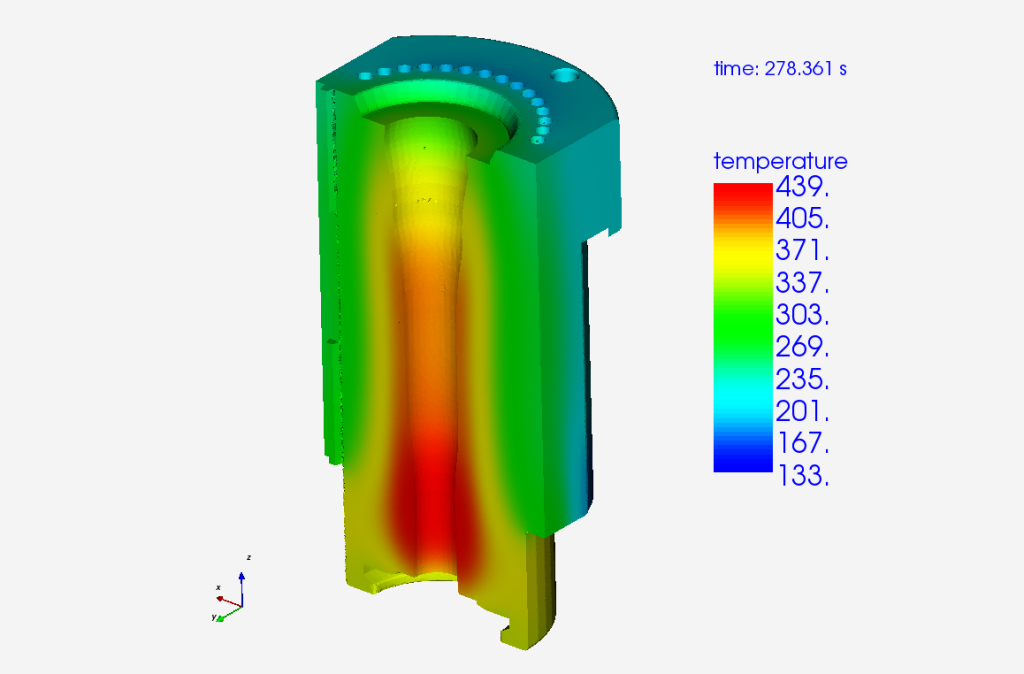
AEROSPACE
The aerospace industry is facing significant pressure to build more efficient, quieter, and environmentally friendly aircraft, space vehicles, propulsion units, and other products. These demands are driven by stricter regulations, higher material and fuel costs, and more discerning customers.
To meet these challenges, aerospace companies are investing heavily in research and development to innovate new technologies and design approaches. Computational fluid dynamics (CFD) simulations are being used to optimize aerodynamics, reduce drag, and enhance fuel efficiency. Advanced materials, such as composites and lightweight alloys, are being employed to reduce weight and improve overall performance. Electric propulsion and hybrid propulsion systems are being developed to minimize emissions and reduce the environmental impact of aircraft.
Noise reduction is another critical area of focus in the aerospace industry. Quieter aircraft are not only more environmentally friendly but also contribute to enhanced passenger comfort. CFD simulations, wind tunnel testing, and other techniques are used to study and optimize noise generation and propagation, leading to the development of quieter engines, airframes, and other components.
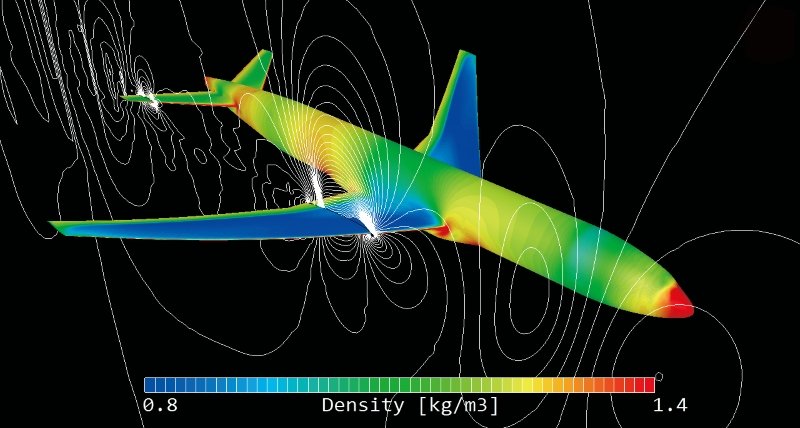
Aerospace:
• Cabin and cockpit cooling : Thermal comfort with natural and forced ventilation , Solar radiation analysis on various ‘atmosphere height.
• Aerodynamic Force analysis : Calculation of various aerodynamic forces (Lift, Drag, Gust, Loads etc) at different height at atmosphere on air cargo, airship, space shuttle, rockets,etc. So that stability and control can be maintained.
•Aircraft Wing, Fuselage and Control Surface Design: CFD Simulation can be used to predict critical forces like drag , lift and its stability characteristics. This parameter is used to optimised design of aircraft wing, fuselage and its control surface like lift dampers,
aileron etc.
Aircraft Engine performances : CFD Simulations can be used for predicting performance
of aircraft engines like proper air-fuel mixing, efficiency improvement , reduce emissions
and increase power output.
Heat transfer analysis: Aerodynamic heating on wing and on other components during
inflight conditions can be determined.
• Structural Analysis: CFD Simulations can provide aerodynamic loads on different
components that can be used for structural analysis to ensure the safety of structures.
• Rockets and Space Shuttle : Various performance characteristics can be understood
during lift off like thrust force , height vs critical parameters (temperature, pressure and
velocity) etc.
AUTOMOTIVE

The automotive industry operates in a dynamic environment with frequent design changes, requiring optimized designs to reduce product cost and cycle time. To achieve this, the industry has increasingly adopted CFD techniques, which offer highly capable flow, heat transfer, and coupled analysis models.
CFD applications in the automotive industry range from system-level, such as external aerodynamics and underhood thermal simulations, to component-level design and optimization, including engines, turbochargers, exhaust manifolds, and HVAC ducts. With CFD simulations, engineers can obtain critical data that is not possible with conventional experiments.
Modern CFD codes and post-processing tools provide engineers with a magnified insight into the flow physics, enabling them to quickly change the design and optimize component performance at the design stage itself. This capability significantly reduces product development cycle time, enabling automotive manufacturers to bring products to market faster and more cost-effectively while meeting customer demands for better performance and fuel efficiency.
External Aerodynamics

The external aerodynamics of vehicles is a crucial factor in designing fuel-efficient, stable, and high-speed vehicles. Aerodynamic drag and lift forces have a significant impact on the vehicle’s fuel consumption, handling behavior, and cooling system. Therefore, predicting aerodynamic loads and associated factors is vital, and the use of CFD for this purpose has grown rapidly. Most manufacturers now use CFD as a standard tool for design evaluation in the product development stage.
With our expertise, we can assist you in:
- Automotive Aerodynamics: CFD Simulation for pressure distribution around the vehicle reduce the vehicle drag so that to improve fuel economy, Ensure vehicle stability and control due to side loads, lift and damping force.
• Cabin Cooling and Thermal Comfort: Using CFD Simulation various cabin cooling duct can be optimized for improving the performance of HVAC design and its passenger’s Thermal comfort like skin temperature, perspiration rate etc.
• Battery Cooling Simulations: Using Multiphase and heat transfer various flow thermal simulation can be done to optimize cooling channel by air or water as coolant. Thermal management of the battery pack for its longer durability. Exhaust Gas Recirculation (EGR): Flow thermal analysis to understand the various child parts temperature distributions and how to increase EGR efficiency.
• Other Automotive parts (like Solenoid valve, Intercooler, pressure valve, Bypass valve, vacuum pump, radiator): Flow thermal analysis (CHT-Conjugate Heat Transfer) on each component can be studied to ensure its performance and steps required to improve it.
CONSUMER GOODS

• Cooking Appliances like Microwave Oven, Conventional Electric Oven, combi of electric
and microwave dvens etc : Flow thermal analysis can be done to understand the
temperature distributions of the components of oven for a full or partial duty cycle with
proper heating cycle ON/OFF period
• Refrigeration and Air Conditioning for Room AC or Commercial AC: Air flow and
thermal Analysis can be performed for various AC IDU (Indoor unit) and ODU (Outdoor
Unit) for improving its design, performance and capacities, Various grill shape and design
of IDU or ODU can be optimised. Blower duct optimisations for any type of AC device.
• Evaporator Design and Development: CFD Analysis of Evaporator design can be
improved to increase its capacity and cost reduction may be performed by reducing the
baffles or fins and number of copper refrigerant tubes.
• Refrigerator Flow Thermal simulations: Flow and thermal analysis for partial or
complete duty cycle either for top mount or bottom mount or single door/double door/
triple door refrigerator. Ice making tray design optimisations. Spill over multiphase
analysis can be done for ice tray design and optimisation.
• Washing Machine and Laundry: CFD Analysis for washing machine to ensure complete
wash cycle with top loaded , heater mounted and its performance . front loaded, capacity
improvement etc.
• Dishwasher: CFD Analysis for accurate nozzle position for dishwasher. heating effect in
dishwasher, wash cycle improvement etc.
• Mixer Grinder and Juicer: CFD Analysis to understanding mixing process along with
particle tracking.
• Other Consumer Designs tike Air purifiers, Fans and Air & Water Cooler Design, Clothes
Iron. Hand Dryers. Hair Dryers & Straighteners etc.

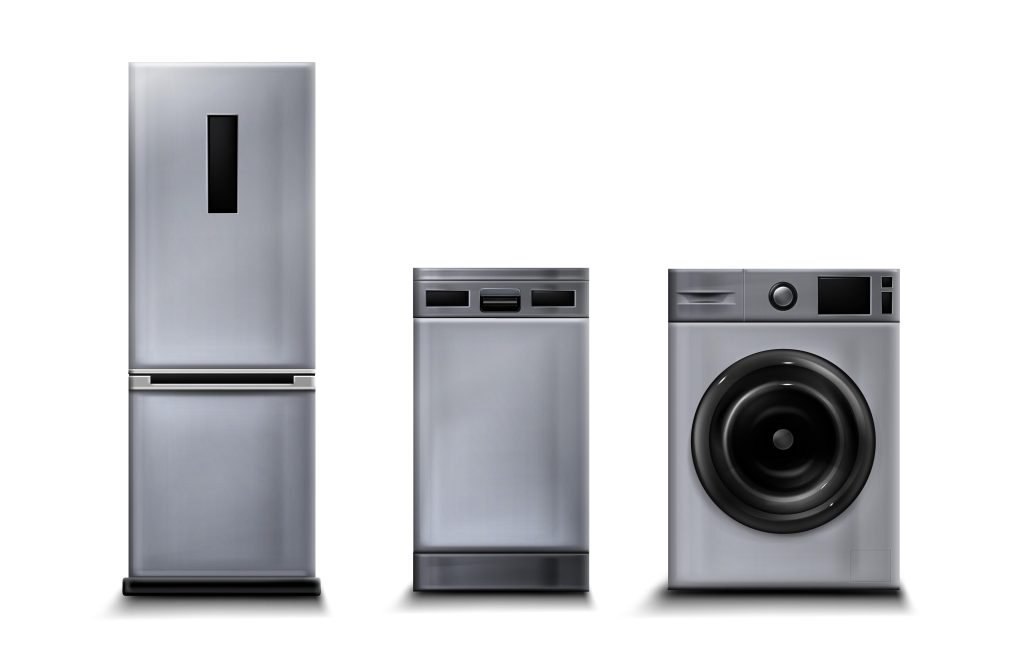
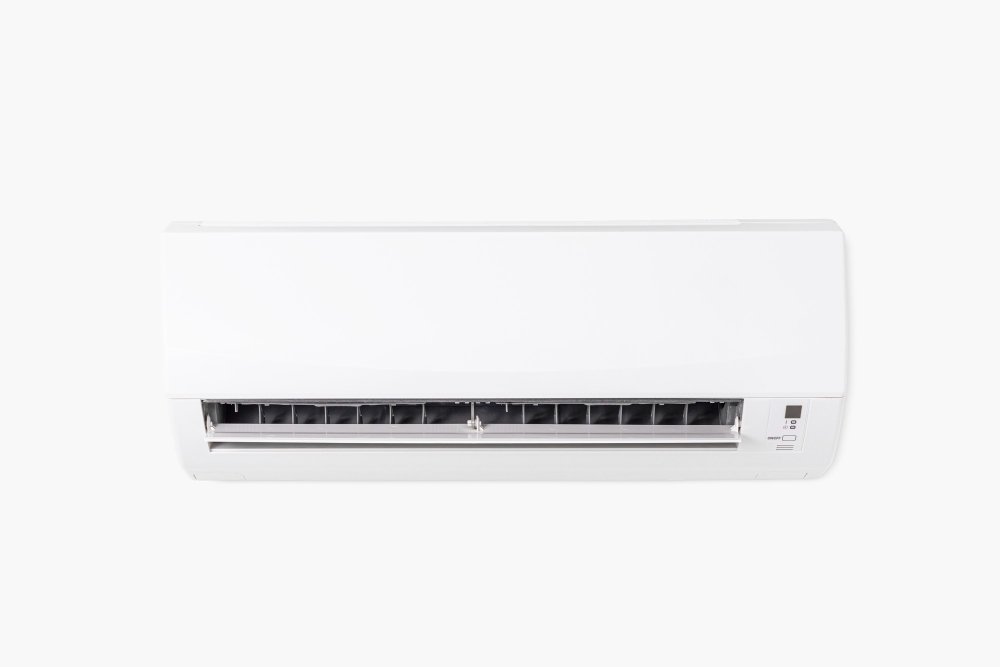
DEFENCE APPLICATIONS

Defence Applications:
• Missile CFD Analysis: High compressible flow (subsonic or sonic or supersonic or hypersonic) analysis to understand the shock behaviour, aerodynamic loads and heating for either surface to surface or surface to air or air to air.
• Ground tank noise minimisation : By optimisation of holes at the front end of ballistic missile noise can be minimised.
• Fighter aircraft : High flying supersonic and hypersonic aircraft can be tested in a virtual laboratory through CFD and various manoeuvring can be analysed. Various stability and control can be checked during inflight conditions.
• Helicopter and Drone Analysis: Inflight or off flight can be tested to see various cross passing by different maneuvering and stability & Control.
ELECTRIFICATION CDF ANALYSIS
Electric vehicles are becoming increasingly popular as people look for more sustainable and environmentally friendly modes of transportation. Design simulation is an important aspect of the development process for electric vehicles, as it allows engineers to test and refine their designs before they are produced. Design simulation software can help engineers model various aspects of an electric vehicle, including the battery, motor, drivetrain, and aerodynamics. By simulating these systems, engineers can optimize their designs to improve efficiency, range, and performance.
For example commercial software in the beginning can simulate airflow around the vehicle and help engineers optimize the vehicle’s shape to reduce drag and improve efficiency. Simulation tools can also be used to model the behavior of the battery and motor, helping engineers optimize the battery pack size and motor configuration to maximize range and power.
Another important aspect of electric vehicle design is thermal management. Battery cells generate heat during charging and discharging, which can reduce their lifespan if not properly managed. Simulation tools can help engineers model the thermal behavior of the battery pack and optimize the cooling system to maintain a safe temperature range.
In summary, design simulation is a crucial part of the development process for electric vehicles, allowing engineers to optimize their designs for efficiency, range, and performance. By simulating various aspects of the vehicle, including the battery, motor, drivetrain, and aerodynamics, engineers can refine their designs before they are produced and ensure that they meet the needs of consumers.
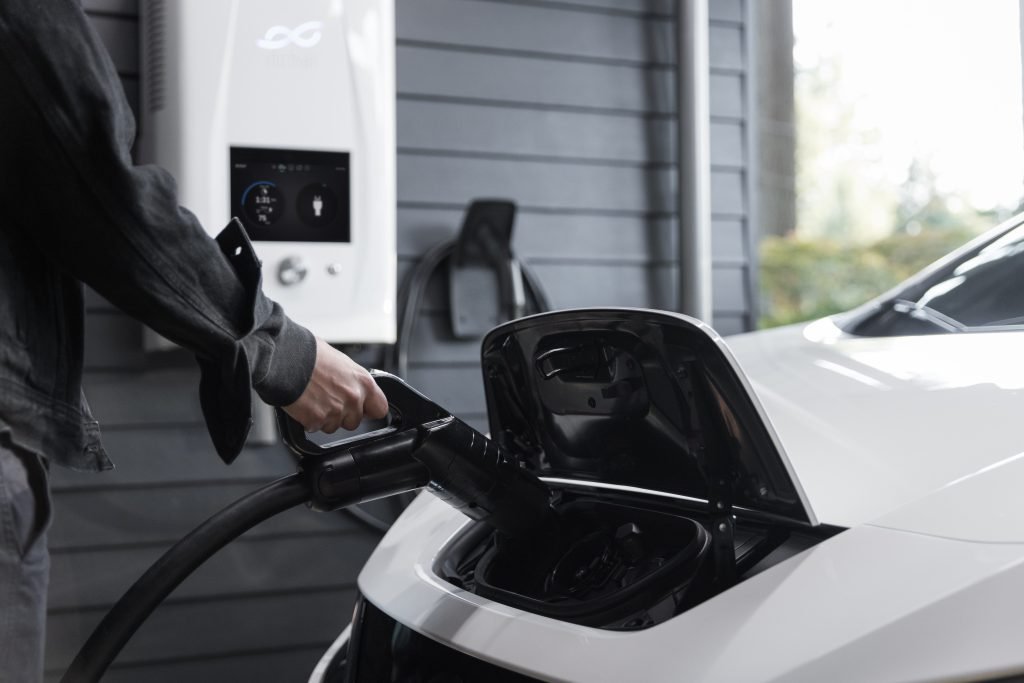
Electric vehicles are becoming increasingly popular as people look for more sustainable and environmentally friendly modes of transportation. Design simulation is an important aspect of the development process for electric vehicles, as it allows engineers to test and refine their designs before they are produced. Design simulation software can help engineers model various aspects of an electric vehicle, including the battery, motor, drivetrain, and aerodynamics. By simulating these systems, engineers can optimize their designs to improve efficiency, range, and performance. For example, commercial CFD software can simulate airflow around the vehicle and help engineers optimize the vehicle’s shape to reduce drag and improve efficiency. Simulation tools can also be used to model the behavior of the battery and motor, helping engineers optimize the battery pack size and motor configuration to maximize range and power.
Another important aspect of electric vehicle design is thermal management. Battery cells generate heat during charging and discharging, which can reduce their lifespan if not properly managed. Simulation tools can help engineers model the thermal behavior of the battery pack and optimize the cooling system to maintain a safe temperature range. In summary, design simulation is a crucial part of the development process for electric vehicles, allowing engineers to optimize their designs for efficiency, range, and performance. By simulating various aspects of the vehicle, including the battery, motor, drivetrain, and aerodynamics, engineers can refine their designs before they are produced and ensure that they meet the needs of consumers.
ELCTRONICS AND DATA CENTER
Electronics and Data Centre:
Data centers are facilities that house computer systems, storage systems, and associated components. It is important to maintain proper environmental controls within data centers, including air distribution, thermal insulation, ventilation, fire suppression systems, and accessibility.
One of the critical factors for safe and uninterrupted operation of data centers is the ambient conditions, particularly the air flow and temperature distribution. To achieve better air flow and thermal management, the use of CFD as a tool is becoming increasingly important.
Scope for flow thermal analysis:
- Airflow simulation in data centre including server racks, cooling equipment and any other
obstructions may effect airflow to get hotspots if any. - PCB or system level simulation for various PCB design with Gerber data modelling.
- Thermal analysis for full system or subsystem with complex wiring network on PCB
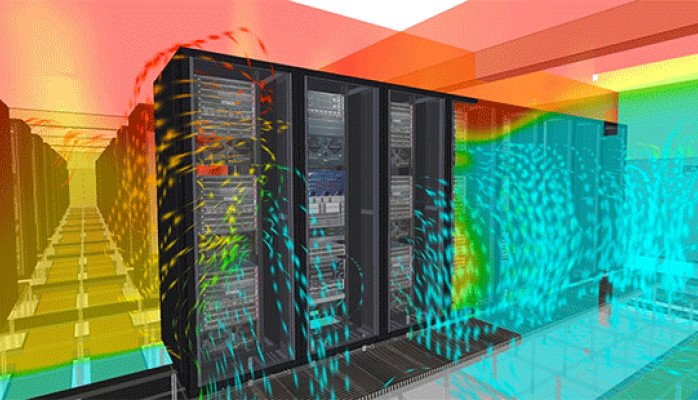
HEAT EXCHANGERS
Design and operation of heat exchangers require accurate prediction of heat transfer process, heat transfer coefficient, temperature and fluid flow distribution. In this regard, computational fluid dynamics (CFD) has emerged as an effective tool for flow visualization, design improvements and optimization of various heat exchanger systems like boilers, radiators, condensers and economizers.
CFD provides engineers with the ability to improve existing systems without increasing their downtime, by investigating fluid flow maldistribution, modeling the heat transfer process, analyzing fouling, pressure drop and thermal performance of heat exchangers. The extensive capabilities of CFD have enabled engineers to optimize heat exchanger designs, improve their efficiency and reduce their environmental impact.
With our expertise, we can assist you in:
- Study of Thermal performance assessment of radiators
- Study of Shell and tube heat exchangers design assessment
- Study of Steam condensing system design assessment
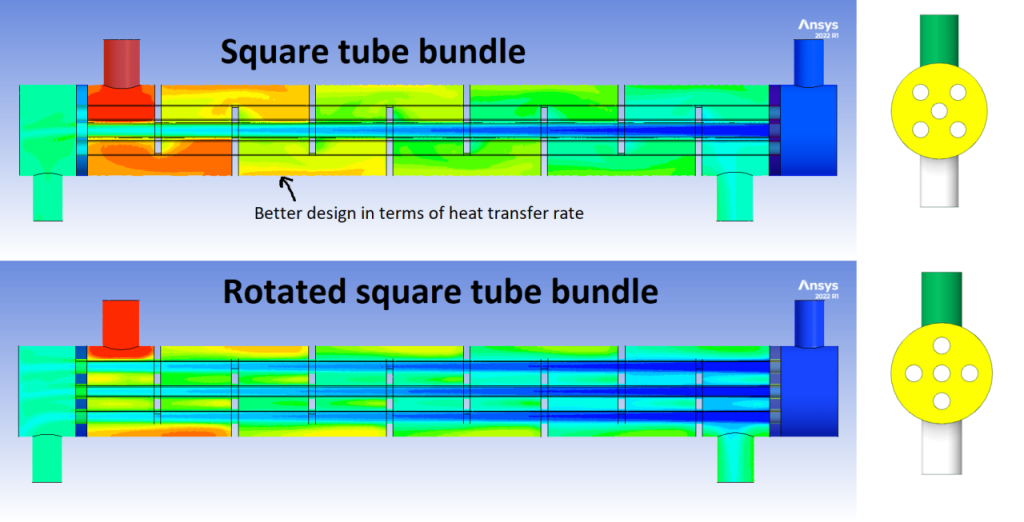
HVAC
CFD plays a vital role in the HVAC industry by aiding in the design and optimization of various components and systems. The technology is used in designing and analyzing air distribution ducts in commercial and residential buildings, tunnel ventilation systems for mines, auxiliary components of ventilation systems, Air Handling Units (AHUs), Air Conditioning systems (AC), Fans and their components, and process plant ducts.
With the help of CFD, engineers can predict pressure drop along ducts, calculate heating load, and determine heat transfer rates required for effective and optimum insulation at an early stage of the design process. This enables them to provide cost-effective and efficient solutions with shorter lead times to meet various growing demands in the industry.
With our expertise, we can assist you in:
- Study of duct optimization
- Study of industrial fans performance assessment and optimization
- Study of air flow distribution within buildings
- Study of thermal comfort of occupant within the room
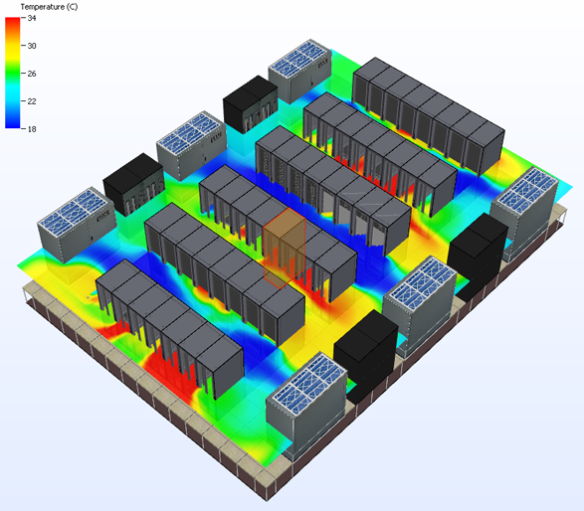

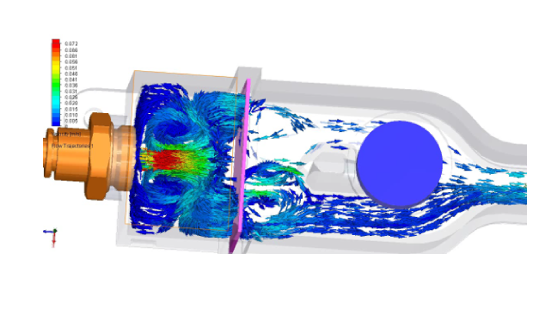
MEDICAL AND HEALTH CARE
Medical and Health Care:
• Medical Device Design and Development for Cardiovascular Disease: CFD Analysis in the field of Cardiovascular Device designed for blood pump, blood oxygenator, blood heat exchanger etc.
• Medical Device Design and Development for Respiratory Disease(Human Lungs): CFD analysis to see particle deposition, inhalers CFD Simulations, Nebulizers and Oxygen Mask CFD Simulations, Aerosols and drug delivery efficiency calculations.
OIL & GAS
The oil and gas industry is a critical sector that plays a significant role in the global economy. However, designing and operating equipment in this industry can be challenging due to the complexity of the physics involved, such as multiphase flows, non-Newtonian rheology, and mixing, to name a few. Additionally, the harsh and varied operating conditions, such as high pressure, high temperature, and corrosive environments, can make it difficult to develop effective solutions.
One solution that has been widely adopted in recent years is the use of computational fluid dynamics (CFD). CFD is a powerful tool that enables engineers to simulate fluid flow, heat transfer, and other related phenomena in complex systems. By leveraging CFD, engineers can gain valuable insights into the behavior of fluids and optimize the design and operation of equipment.
Mixing Flow
Yes, CFD can definitely assist in the rational design of mixing process, stirrers and other components of a mixing tank. The simulation results obtained from CFD can provide valuable insights into the flow patterns, velocity distribution, and mixing efficiency within the tank. With this information, engineers can optimize the design of impellers and tank geometry to achieve desired mixing performance, reduce energy consumption, and minimize mixing time. Moreover, CFD can also be used to evaluate the impact of different process parameters, such as fluid viscosity, temperature, and flow rate, on the mixing performance, and aid in the selection of suitable impellers and tank geometries for a given application.
Services We Provide :
•CFD on Multiphase flow analysis in various pipe networks, manifolds and junctions.
•In-depth analysis on Multiphase flow analysis in pumps & separation equipment.
•Sand erosion and sand blockage assessment.
•Study on Oil or any other liquid Sloshing analysis.
•Simulation on Surge phenomenon.
•Analysis to get Cavitation phenomenon.
•Flow Analysis to get Water hammer analysis.
•Simulations on Gas phase and liquid phase reactor flow analysis.
•CFD on Slurry flow analysis

RAIL TRANSPORT
Modern rail transport systems are designed to provide safe, efficient, and comfortable transportation for passengers. However, the design process for these systems is complex, and there are several critical considerations that must be taken into account, including external aerodynamics, thermal comfort of passengers, and acoustics. External aerodynamics, thermal comfort of passengers, and acoustics are critical considerations in the design of modern rail transport systems. CFD techniques are widely used by manufacturers as a cost-effective tool for achieving design objectives in a shorter period of time. By simulating air flow around the train, CFD helps to optimize the shape and design of the train to reduce drag and increase energy efficiency. In addition, CFD is used to analyze the thermal comfort of passengers by predicting temperature and air distribution inside the train. The acoustics of the train are also analyzed using CFD to reduce noise and improve passenger comfort.

REAL STATE (BUILDING AND CONSTRUCTION)

Designing tall buildings and skyscrapers with optimized external shapes that reduce drag forces and stress induced by wind loads, while ensuring the comfort of residents and pedestrians in the surrounding area, has always been a significant challenge for architects and engineers. Most of these challenges arise due to building shapes and wind flow. However, with the application of CFD, these challenges can be overcome by designing buildings with better external shapes that are suitable for their geographic location.
Services we Provide
• Ventilation Analysis in car parking basements with proper placements of ventilation outlet and axial fan.
• Natural Ventilation for various towers with proper windows and door position in individual and combinations of building towers
• Mechanical Ventilations to circulate the fresh air around the building using fans, ducts
and other mechanical device.
• Hybrid Ventilation in the building towers with air quality monitoring to combine Natural
and Mechanical ventilations for complete building towers in a premises.
• Room AC and heaters positioning in a building tower so that total AC power can be
saved and Heating or Cooling effect can be optimised,
• Building or Group of Building or City Aerodynamics CFD Simulations can be carried out
for best placement of building tower location, plantation etc.
• Thermal comfort of an auditorium or conference hall or movie theatre so that
suffocation land comfortless can be removed by proper ventilations.
• Dams and River bridge CFD Analysis to understand the impact of pressure force on
various structures of Dam and bridges.
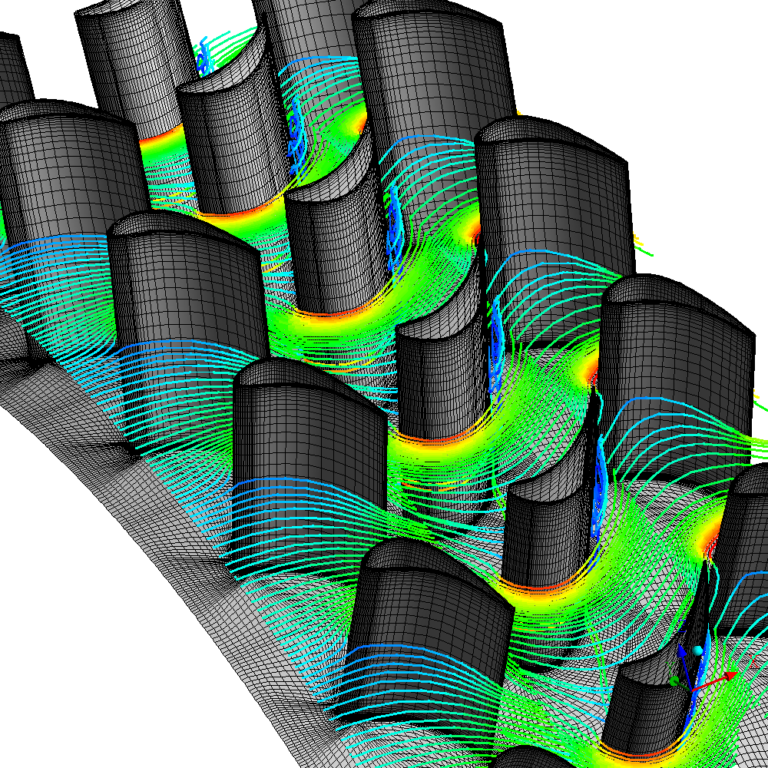
Turbomachinery and other rotating Machinery:
CFD is indeed a powerful tool for designing and optimizing turbomachinery systems. By predicting the flow patterns and characteristics within turbines, pumps, and compressors, engineers can optimize the performance of these machines for maximum efficiency and reliability. Additionally, CFD can help reduce weight and cost by identifying areas of the design that are over-engineered or can be improved. CFD can also assist in reducing noise and avoiding issues such as cavitation, which can lead to damage to the system. Overall, the use of CFD in turbomachinery design and optimization has revolutionized the field and has allowed for the creation of highly efficient and reliable systems.
TURBO MACHINERY(CFD) Services
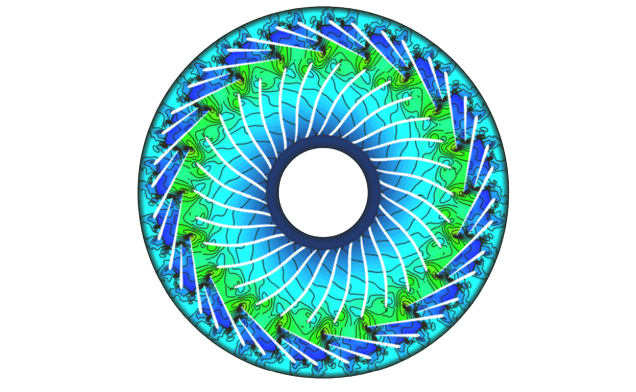
Turbo Machinery refers to a wide range of machines that include turbines, compressors, pumps, and fans. These machines are used in various industries, such as power generation, aerospace, automotive, and oil and gas. To improve the performance of these machines, computational fluid dynamics (CFD) services can be used. Here are some key points about Turbo Machinery (CFD) services:
CFD services can be used to analyze the fluid flow and heat transfer behavior within turbo machinery components, such as blades, vanes, and impellers. This analysis can help to identify areas of inefficiency or performance degradation, allowing for improvements to be made.
CFD simulations can be used to optimize the design of turbo machinery components, such as the shape of the blades or the spacing of the vanes. This optimization can lead to better performance and efficiency, reducing energy consumption and increasing output.
CFD services can be used to study the effects of different operating conditions on the performance of turbo machinery. This can help to identify the optimal operating conditions for the machine, improving its efficiency and lifespan.
CFD simulations can be used to identify potential issues with the operation of turbo machinery, such as cavitation, which can cause damage to the machine and reduce its performance. By identifying these issues early, they can be addressed before they become major problems.
CFD services can be used to simulate the performance of turbo machinery under different environmental conditions, such as high altitude or extreme temperatures. This can help to ensure that the machine will operate reliably in a variety of settings.


